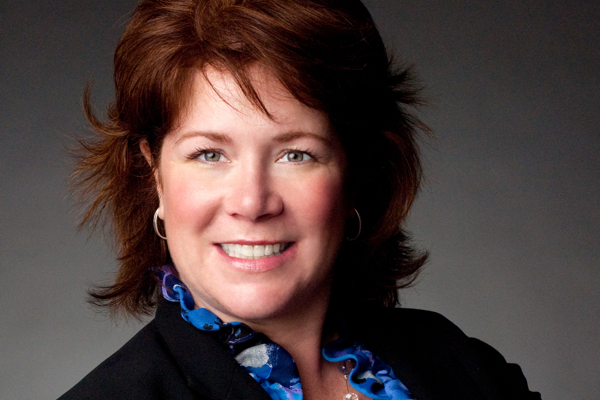What’s changed in the past two years? Everything. And nothing. In terms of handling today’s revenue strategy, the elements remain the same. But the impact of those decisions, how we think about them, and the actions we need to take to address each element is completely different from any time in the past.
Contributed by Kathleen Cullen, CRME, PTG Consulting, San Francisco, and past HSMAI Revenue Optimization advisory board chair
This article explores some of the changes and provides recommendations to help create a level of certainty in today’s uncertain world.
Do more with less is the new norm. Operating in a lean environment has taken on a whole new meaning and intensity. The labor market globally is very thin and not projected to improve anytime soon. Good revenue talent has been a long-standing challenge and finding the right individual who knows strategy, technology and can also handle the tactical execution is key. In the post-pandemic environment, revenue leaders, like many other disciplines, are managing more hotels than ever and struggle to stay on top of the fundamentals.

Pre-pandemic, many hotels relied heavily on revenue management systems (RMSs) for detailed analysis and pricing decisions. However, traditional RMSs cannot keep up with the constant changes and require reconfiguration. At the same time, everyone’s heavy workload and lack of time makes managing these requirements a challenge. Therefore, many have reverted to back manual processes to ensure they can be nimble and efficient.
The biggest need in today’s marketplace is efficiency. Every aspect of the hospitality business (if not every business) is focused on how to be more efficient, which includes evaluation of existing partners. Many operators are reviewing existing partners with the goal of consolidation. The ideal partner will offer one point of contact to meet multiple needs, while providing quality services and superior support. There is no tolerance for partners who slow operators down, especially when it comes to distribution partnerships. Offline channels are no longer an option. Rather, full automation of distribution channels is a requirement.
New benchmarking brings new revenue opportunities. Much of how hotels previously determined strategies was based on benchmarking their own products and services against other hotels in the same market or similar destinations. With all the changes in how hotels operate, services offered, and modifications to customer segmentation, it is critical that everyone reviews their competitive set.
It is highly likely that the previous competitive set looks much different from today’s competitive set. Addressing new benchmarking opportunities will help you understand the reshaped landscape and shape your go-to-market strategies.

For example, a luxury 5-star hotel company with several hotels in Mexico decided to think outside of its normal market and created alternative competitive sets using markets they never considered before such as Hawaii. By paying attention to other destinations and knowing about activities such as travel lockdowns in Hawaii, it helped them to understand the impact on their destination. They identified demand surges from their website and voice data when the other destinations applicable to their feeder markets were more restricted, and as a result were confidently able to position rates given the increased demand.
Go-to-marketing strategies were tailor-created towards working remotely and included specific programming activities for children allowing the parents to work and relax. Offers encouraged longer length of stays with complimentary offers, resort credits and even kids-eat-free campaigns.
Strategies are all about ADR, and staffing levels are dictating occupancy versus demand. BAR levels are out, and Open Pricing is in. Owners are focused on the bottom line and measuring success through GOPAR. This means it’s all about efficiencies and managing costs.
In many cases, hotels are struggling with staffing levels forcing an occupancy ceiling and many to juggle multiple areas of responsibility. Sales departments are operating on limited staff and often have one person handling multiple segments. Hotels admit to missing out on revenue opportunities because they are unable to be proactive and are even leaving RFPs unanswered.
It is highly recommended that each hotel gains an understanding of their opportunities and create a plan to put resources against them. Start with a review of the group and corporate RFPs, as feedback from travel planners and advisors indicate that these are two of the biggest opportunities or areas of no-response today. For hotels that do not have the resources to do this, consider a third-party contractor to assist in the interim. This will at least keep the hotel top of mind with travel planners as they see responses coming through. Hotels without responses are not being considered at all.
Booking patterns have significantly shifted and all segments need to be approached differently. Everything is incredibly short-term, and hotels must have flexibility. Groups are booking, but, oftentimes, doing so short-term, and in many cases, are being booked by non-meeting planners, which has led to changes in the booking approach. A wider variety of hotels and destinations are being considered by planners for individual groups than ever before, with some planners being even more conservative in their bookings. This trend is impacting how hotels are positioning themselves as they now need to anticipate in-the-month-for-the-month pick up and can no longer automatically assume there will be a wash factor.
Be sure to watch the booking patterns closely and stay in touch with the main contact to understand and anticipate their needs and expectations for any additional last-minute bookings.
Corporate and consortia segments are starting to rebound, yes, but as with most other markets, their booking patterns have shifted, and they are utilizing new partners and methods to align with the fluid landscape. Operators would be wise to ensure they are tracking the patterns and new booking methods to get their fair-share of the business.

Identifying and planning for a new business mix requires thinking and acting differently. Most hotels had to pivot to find new business, which created the opportunity to attract previously untapped segments. It’s critical that operators review all resources to ensure the deployment is aligned with these new opportunities. Is the sales department set up to target and capture the new segments? Is the operations team prepared to deliver the right service that meets the expectations of the new type of customer?
New segments bring different customer types and different customer expectations. Is the hotel servicing to the new customer expectations? Understand where the hotel may need some improvement. Listen to what the customer is saying. Speak with the operations team to understand the gaps from their perspective and map out a plan of action to close these gaps and address the needs.
A common desire for many hotels continues to be shifting from a previous group focused segment to the luxury leisure customer. This type of shift requires an entirely new way of thinking and servicing. The hotel sales team should be made up of individuals that understand and have experience in luxury leisure and have the right contacts to ensure hotel awareness. A full assessment of all the critical leisure programs will be needed and decisions for investments into these programs will need to be made.
Servicing the luxury customer is very different from servicing group customers. Their expectations are by far much more demanding compared to the group customer. It is critical that operators ensure proper customer service training to prepare the entire team throughout the hotel for the new type of customer. And be prepared that this will not happen overnight.
Dynamic policies are an expectation. The pandemic forced most hotels to be nimble with reservation policies. However, there is an opportunity to look at policies on a more granular level. Be sure that you are tracking performance by product and attach unique policies to each individual case to protect the higher room categories while offering more flexibility with lead-in-room products.
Examples include placing a strict cancellation policy on the hotel’s higher end products such as suites or villas, while offering flexible cancellation policy for the lead-in room categories.
It’s time to rethink guest communication. The expectation for communication integration is real-time, shorter, and more intentional now. Moving forward, finding alternative ways to communicate is critical for guest relations and building loyal customers, leading to better service scores simply by communicating in the way that the guest wants. And, understanding things from their perspective is an important aspect of setting up for success.
Consider technology integrations that allow you to correspond with third-party guests directly prior to their arrival. Go back to basics and listen to what your customers are telling you. Listen to reservation calls and ask your front desk associates what customers are saying.
Reimagine the hotel product and consider co-working spaces. The way people work has changed forever. While many workers don’t want to go back to the office, they still want a comfortable and productive working environment. Coworking spaces coupled with the right amenities may be successful for those in neighborhood locations.
Consider reviewing under-utilized spaces in the hotel and identify opportunities to reimagine them to create new revenue opportunities. Are there meeting rooms that could be converted to multiple offices or hot desks for locals? Do you have guest rooms that may be better used for short-term offices?

Is a cancelled customer a forgotten customer? Consider implementing a method to track and communicate with those that may have booked and cancelled. Use this data to create a strategy focused on a personalized touch to encourage them to rebook.
There are several options available to hotels to track cancellations. Some hotels have the luxury of using sophisticated technology such as the Navis platform. But for others, something as simple a combination of using the PMS and an Excel spreadsheet may be helpful. Be sure the PMS is set up for tracking the cancellation reasons and reporting can be run off this. Incorporate the PMS report into an Excel tool allowing to lay out a plan for each customer or segment of customer.
Travel agents are your friends. Pursue relationships with qualified travel agents and ramp up the approach with FAM trips. Track the bookings from those relationships and investments to show the successes and ROIs.
Network, network, network. With so many professionals working from home and doing more with less, it’s critical that you network with peers and create in-person interactions. Get involved in local HSMAI chapters. Reach out to your in-market colleagues. Sharing ideas and learning from each other is a crucial piece to success.
